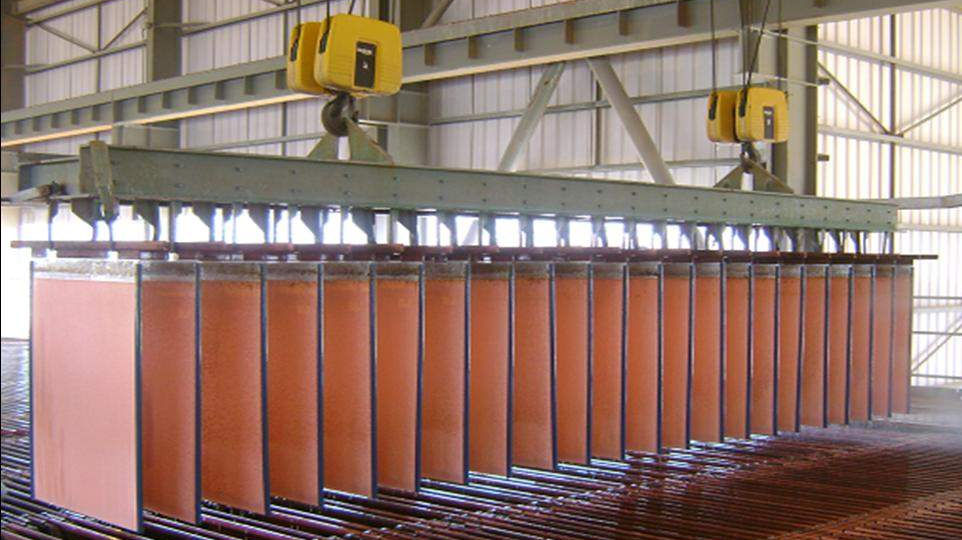P705C - Improving Base Metal Electrowinning

Value
USD $1,665,000
Commencement Date
November 2013
Duration
3 years
Program Manager
Chris Ward
Research Providers
Missouri University of Science and Technology; Federal University of Minas Gerais (UFMG); Murdoch University; University of Utah
Sponsors
Anglo Operations Limited; Freeport-McMoRan Mining Company; Industrie De Nora S.p.a.; MMG Limited; RSR Technologies Inc; Teck Metals Ltd; Votorantim Metais
PROJECT SUMMARY
AMIRA P705C is a 45 month research project that commenced in November 2013 and is focussed purely on electrowinning as metal electrowinning is a critically important process in the production of high purity zinc, copper, manganese, nickel and cobalt from primary sources. As background, the tankhouse capital costs can represent 20-40% of the total capital costs of a leach-EW operation,. Furthermore, the electrical power needed for electrowinning can constitute 25% of the total energy cost of producing copper and is also a significant fraction for zinc metal production costs. The project is supported by Freeport McMoRan, Votorantim Metais, MMG, Teck Metals, Anglo American, Industrie de Nora and RSR Technologies and is delivering outcomes to it its sponsors from world leading research teams on 3 continents that:
- reduce process energy consumption
- improve capital utilisation
- reduce acid mist and thus improve worker health and safety, and
- delivering training and up to date transferring knowledge to operating sites.
HIGHLIGHTS/DELIVERABLES/ADDITIONS
The P705 series of projects has been world leader in electrowinning research and innovation now for >10 years and in this period has delivered significant understanding and innovations that has allowed the project sponsors to continually improve their operations, costs and efficiency of their facilities. Some highlights include:
- Improved understanding of the major factors governing the rates of corrosion of lead-based alloys as anodes in the electrowinning of copper, zinc and nickel.
- Identification of the effects of periodic current interruptions on the corrosion of lead alloy anodes.
- Practical and fundamental information on the role of cobalt in minimizing corrosion of anodes in the electrowinning of copper.
- An extensive review of acid mist generation, measurement and health aspects.
- Important insights into the mechanisms of incorporation of lead and sulfur impurities in copper and zinc cathodes.
- Identification of the lead species responsible for contamination of copper cathodes.
- Development of a simple, convenient instrument for the rapid measurement of current efficiency during the electrowinning of zinc.
- The modelling of the growth of metal deposits to facilitate optimization of cell performance in terms of tendency to short-circuits, surface quality, power consumption, and current efficiency as a function of operating parameters.
- Successful development of methods for the simulation of the distribution of current between electrodes within cells in typical tankhouses.
AMIRA P705C has continued to deliver outcomes during the course of the project and while the project is only a third the way through its planned programme has already delivered site and industry workshops on 2 different continents and on-line webinars for its sponsors in areas affecting their sites' costs, efficiencies and operator health and safety. Very recent project outcomes are already showing benefits in anode lifetimes at sponsor sites with the resultant costs savings flowing through. A new initiative commenced in P705C is the "Dr Electrowinning" on-line troubleshooting guide that will be accessible to sponsors on laptops and mobile phones to assist operators and engineers to problem solve issues in their tankhouses. The framework for this initiative, with a number of decision trees, was unveiled to sponsors recently and its implementation is now widely anticipated. As P705C progresses the expectation is that significant efficiency, cost and quality gains will be realised as the information learned globally will be available immediately at all sites to speed up the return to steady operations from process upset conditions.